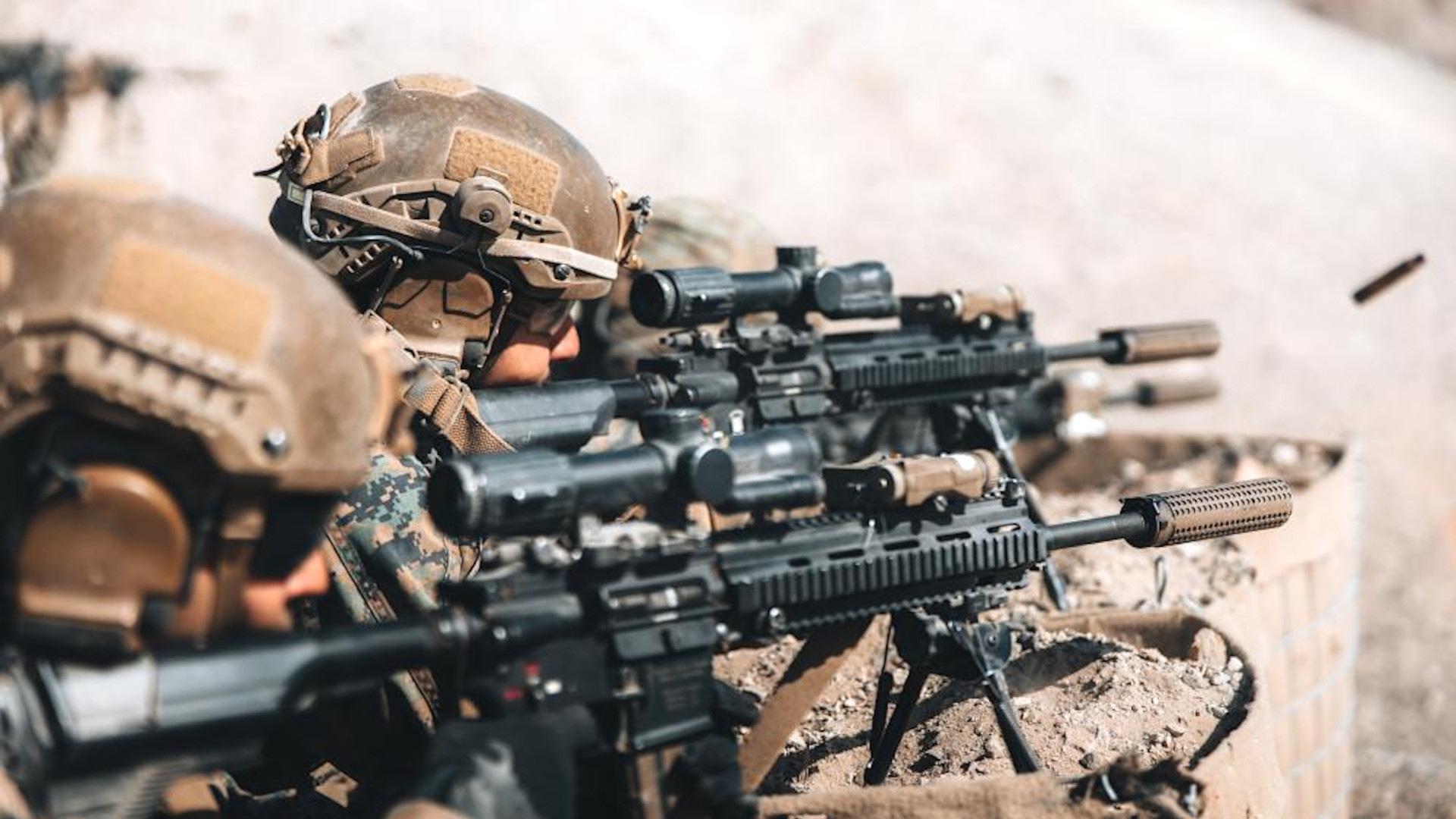The U.S. Marine Corps is interested in “buckshot-like” canister rounds for 5.56x45mm and 7.62x51mm rifles, as well as .50 caliber machine guns and 40mm grenade launchers, to help smaller units better tackle rising drone threats. The service is also eyeing the possible acquisition of electronic warfare jammers small enough to be strapped onto individual rifles, as well as larger, but still readily portable jammers and advanced gun sights. This is part of a broader effort to enable every Marine to protect themselves against enemy uncrewed aerial systems (UAS), details about which the service laid out earlier this year as you can read more here.
Marine Corps Systems Command (MARCORSYSCOM) put out a Request for Information (RFI) today regarding several desired squad and platoon-level counter-drone capabilities. The main focus of the RFI is on additional ways to spot, track, and defeat drones in what the U.S. defines as Groups 1 and 2. Together, these two groups encompass UASs weighing up to 55 pounds, that can fly at altitudes of up to 3,500 feet, and that have top speeds of no more than 250 knots.
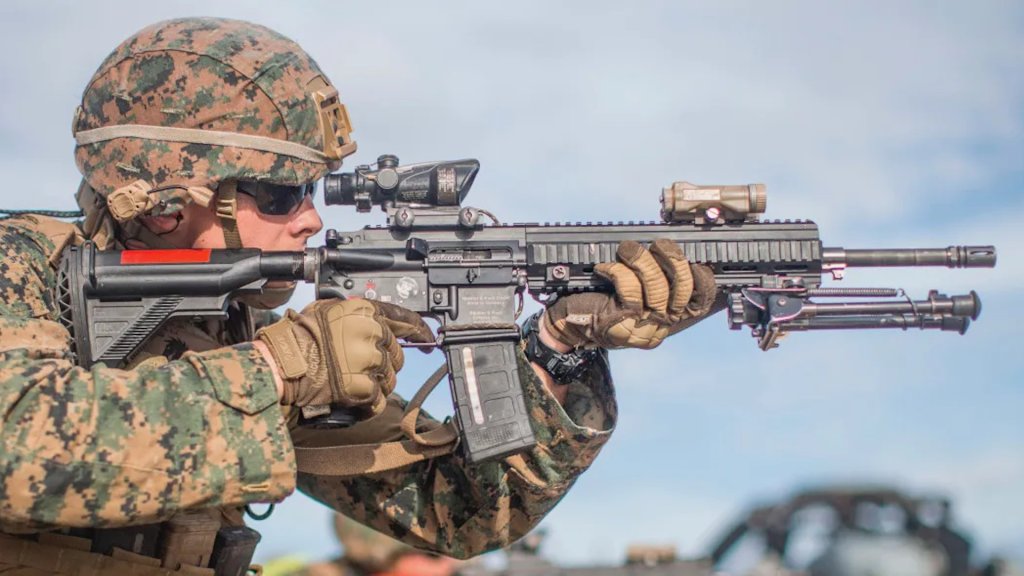
“The Joint CsUAS Office (JCO) has identified dismounted CsUAS capabilities as a vulnerability to the joint force. The Marine Corps Warfighting Lab (MCWL) identified the need for dismounted CsUAS throughout multiple experiments,” the RFI explains. “Additionally, Tactical Training and Exercise Control Group (TTECG), Infantry Officer Course (IOC), both Schools of Infantry (SOI), and other units continue to fly threat UAS against Marine units during field exercises and training events. Each experiment and training exercise shows Marines are vulnerable to threat UAS and require the ability to defend themselves from the threat.”
At the same time, “the squad-level solutions need to be carried by dismounted Marines with little to no impact on their primary mission,” the contracting notice adds. “The platoon-level solutions may be transported in light tactical vehicles, assembled without the use of material handling equipment, and operate on battery power.”
When it comes to defeating drones, the squad-level capabilities the Marines are now interested in are “enhanced ammunition for existing firearms (buckshot-like 5.56, 7.62, .50, .40mm),” a “directional RF [radiofrequency] and/or Global Positioning System (GPS) jammer, ideally able to mount on organic rifle,” and “a rifle / rifle optic capable of tracking and defeating small UAS.”
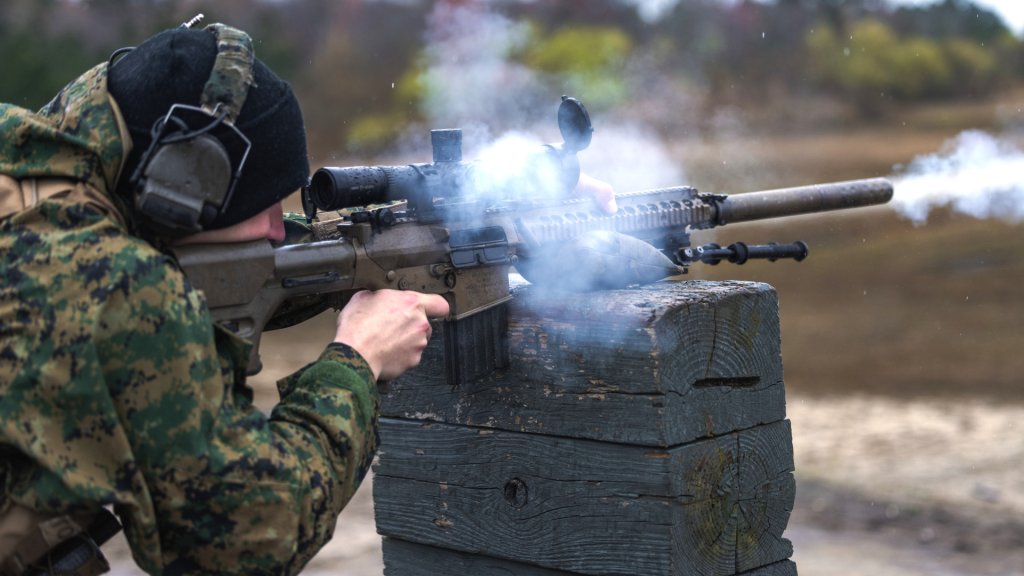
The RFI outlines a desire for the same “enhanced ammunition” and advanced optic for small arms at the platoon level, as well as an omnidirectional RF and/or GPS jammer.
MARCORSYSCOM’s RFI also calls for “passive detection system[s] that can detect UAS using acoustic or radio frequency (RF) detection” with “components [that] may include a handheld tablet, bracelet, earpiece, and/or glasses that receives alerts, warnings, notifications from an external sensor(s) (i.e. radars and/or passive detection systems).” At the squad level, the detection systems need to be small and lightweight enough to a single individual can carry them with “limited impact on primary mission equipment,” while at the platoon level they “can be vehicle, mast or tripod mounted.”
Buckshot-esque ammunition could, in principle, help increase the probability of a kill, especially when engaging smaller and very maneuverable drones, like first-person view kamikaze types that have become a scourge on both sides of the battlefield in Ukraine. Depending on their exact design, components of canister rounds that don’t find their mark could present less of a risk to bystanders on the ground than traditional bullets, as well. Many larger automatic cannons employed against aerial threats, like the Centurion ground-based version of the naval Phalanx Close-In Weapon System (CIWS), use self-destructing ammunition for this exact reason.
It’s worth noting here that canister-type rounds loaded with pellets and metal darts called flechettes have already been developed for 40x46mm and 40x53mm grenade launcher launchers like the M320 and Mk 19 Mod 3, respectively, which are in widespread service across the U.S. military. The single-shot M320 can be used attached to standard infantry rifles and carbines, such as Marine Corps M4s, or as a stand-alone weapon. The Mk 19 Mod 3 is a larger fully-automatic design intended to be employed from a tripod on the ground or in a vehicle-mounted configuration.

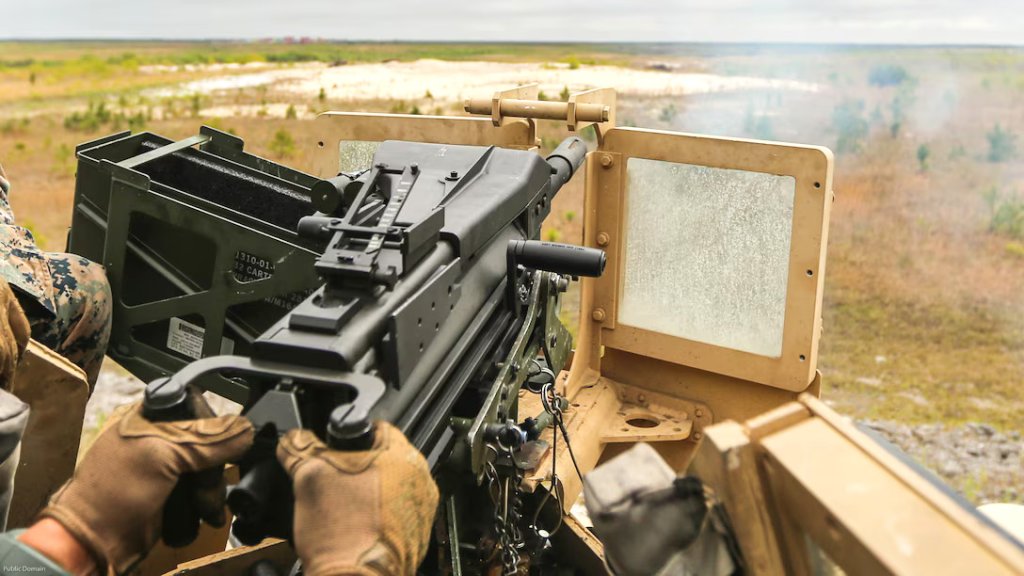
At the same time, canister rounds for any weapon typically have significantly reduced range compared to standard ammunition types. It also is unclear how viable a buckshot-like round for 5.56x45mm and 7.62x51mm rifles and .50 caliber machine guns might be. Different types of pellet-filled rounds have been developed for various small arms, including rifles and handguns, in the past. The Glaser Safety Slug discussed in the video below is one of the better-known contemporary examples. However, small arms cartridges of this kind have typically been designed primarily for very close-range self-defense, survival, or even pest-control use. They also often present problems when fired from guns with sound suppressors fitted, something the Marine Corps has been working to increase the use of across the board.

Individual Marines could carry magazines or belts loaded with counter-drone-specific ammunition as part of their standard loadouts. However, having to swap back and forth between those specialized rounds, which might be of limited use against other target sets, and standard types could present issues at the tactical level.
Shotguns are already in use in the U.S. military and among foreign armed forces to varying degrees as counter-drone weapons, but also have range limitations. Specialized ammunition types, including rounds loaded with nets, have been pitched as ways to improve the effectiveness of shotguns in this role.

It’s also worth noting here that the Marines have already at least been evaluating SMASH 2000-series computerized optical sights from Israeli firm Smart Shooter. Members of the SMASH 2000 family have the ability to spot and lock on to targets of interest, including ones on the move, all of which is well in line with the MARCORSYSCOM RFI’s call for an advanced rifle sight to help defeat small UASs.
SMASH 2000-series optics are in service now with regular and special operations units within the U.S. Army to help improve the ability of individual soldiers to use existing small arms and ammunition against drones, as well as other targets. The Navy and other elements of the U.S. special operations community have also been testing SMASH 2000s and other optics from Smart Shooter.

There could be similar questions about the range and general effectiveness of any RF/GPS jammer small enough to be attached to an individual rifle, machine gun, or grenade launcher. Dedicated hand-held ‘drone guns’ that exist today with this kind of functionality are generally bulky systems.
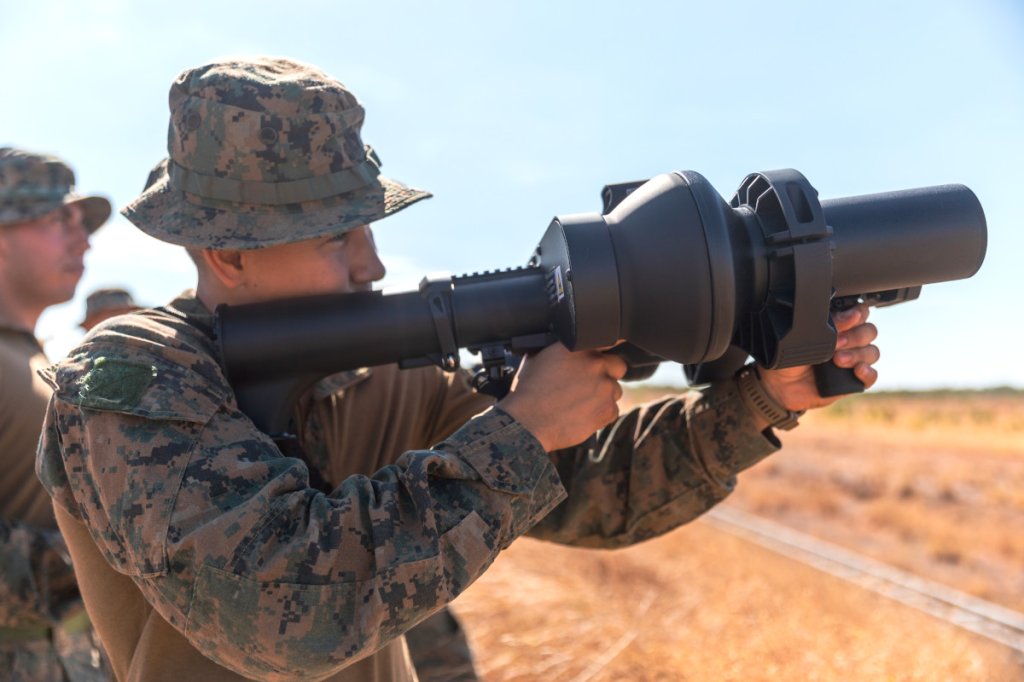
On the detection and tracking side, it is also worth noting that Ukraine has deployed an extensive passive acoustic sensor network to detect and track larger drones than the ones outlined in the MARCORSYSCOM RFI. That system is also then capable of alerting counter-drone teams and helping get them into position, as you can read more about here. The U.S. military has expressed interest in testing that capability for its own use in the past. The U.S. military also already has an acoustic gunfire detection system called Boomerang.
Passive radiofrequency signal detection, which is also mentioned in the RI, is already commonly used in various counter-drone systems. Small form factor active electronically-scanned (AESA) radars are increasingly commonly used as part of fixed-site and vehicle-mounted systems, as well.
Any new counter-drone capabilities that can be fitted to existing small arms or that are otherwise readily portable could well be of great interest across the U.S. military for use in operations down range, as well as defending facilities and other critical assets outside of a conflict scenario. If nothing else, the Marine RFI makes clear that drones are a pressing threat that is only set to grow as time goes on as technology improves, especially when it comes to steady developments in autonomy and artificial intelligence. The ongoing conflict in Ukraine has fully brought the threat that drones pose on and off traditional battlefields into the mainstream consciousness.
“Without a CsUAS [Counter small UAS] capability to employ at lower echelons in an integrated and layered defense, every unit and every Marine will be vulnerable to reconnaissance and attack from threat UAS, risking mission success and loss of life,” the contracting notice says without reservation.
“The threat is evolving in real time,” Lt. Col. Robert Barclay, the Marines’ ground-based air defense advisor for aviation expeditionary enablers, said at this year’s Modern Day Marine expo back in May. “We were playing a cat-and-mouse game a lot of times, and that quite frankly gets a little cumbersome, and you don’t want to be behind the power curve.”
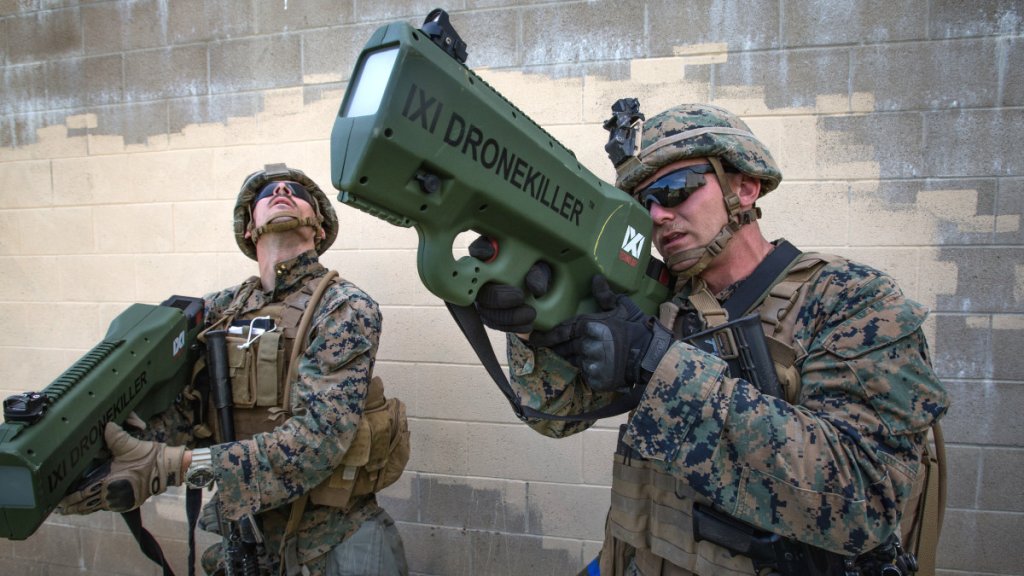
Barclay’s remarks were part of a larger discussion of the Marine Corps push to make every Marine a counter-drone defender, as you can read more about here.
At the same time, the new RFI’s discussion about the mountain of evidence about the drone threat available to the Marines, as well as Lt. Col. Barclay’s remarks at Modern Day Marine, underscore how all of this is not new and how America’s armed forces continue to very much be playing catchup in fielding counter-UAS capabilities. The U.S. military’s short-range and other air and missile defense capabilities, in general, were allowed to atrophy for decades following the end of the Cold War, a trend the Marines, as well as the Army, are trying to reverse. The War Zone has highlighted these increasingly concerning deficiencies on multiple occasions over the years.
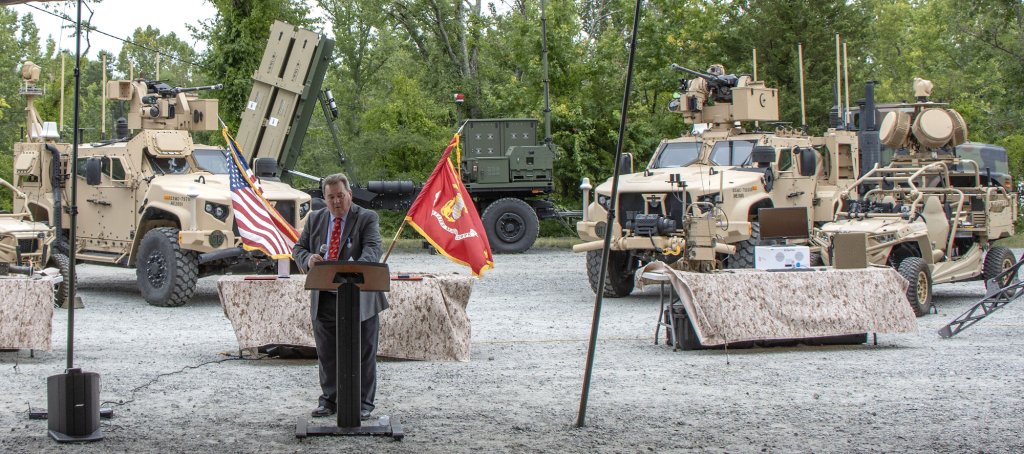
For the Marines, the service’s counter-drone future may include squad and platoons of personnel with small arms loaded with canister rounds and fitted with small jammers and advanced optics.
Contact the author: joe@twz.com
